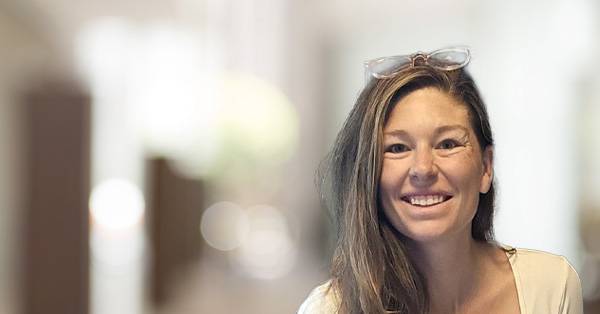- Solutions
- Solutions
- Home Health
- Hospice
- Life Plan Community
- Palliative Care
- Private Duty
- Senior Living
- Skilled Nursing
- Skilled Nursing
- Skilled Nursing Software
- Advanced Insights
- Customer relationship management
- Data and analytics
- Financial & operations management
- Marketing
- Nutrition management
- Referral management
- Regulatory compliance
- Retail management
- Resident engagement
- Revenue cycle management
- Skilled nursing interoperability
- Partners
- Blogs
- Resources
- About
- User Conference

Using ambient sensing to support aging in place
It’s not hard to understand why so many seniors strongly prefer to live independently as long as possible. The sense of autonomy, control and security that comes from living in your own place is familiar to most adults.
But how can we balance the concerns of family members about an older loved one’s health and safety with that desire for autonomy? One answer is technology like ambient sensing, which can help seniors age in place while offering peace of mind to families about their loved one’s safety and wellness.
Ambient sensing makes data actionable
Ambient sensing technology consists of small, unobtrusive devices that look similar to a smoke detector placed in a home or apartment. These units send continuous radar waves that monitor movement. From a safety perspective, the FDA has concluded that the radar signals are as safe as Bluetooth, which is around us all the time. From a privacy perspective, the advantage is that there’s no video, no way to see what an individual is doing or watching or reading.
The sensors gather data points from radar readings and string them together on a continuous basis. Simply put, this technology accumulates and analyzes data around the clock to help caregivers identify subtle changes in behavior or activity that could indicate mobility issues, irregular sleep patterns or other concerns. When these changes are caught early, caregivers can take appropriate action to help keep the resident’s condition from getting worse.
Resident expectations are changing
Especially in independent living settings, residents expect more services and support than ever. But it can be hard to meet those expectations without increasing your staff count and associated costs—a challenge many senior care organizations cannot currently manage given ongoing staffing and reimbursement challenges.
Ambient sensing technology is an opportunity to maintain headcount and can even be used as a tool to drive occupancy while providing better care. It gathers detailed resident information which helps staff take action when needed and allows them to prioritize and customize care. For example, staff that helps residents with their morning routine can re-organize their work based on each resident’s preferred schedule. If the resident in room three likes to sleep in, they can help other residents who are up and active first, which supports residents’ expectations for independence and safety while also helping staff work more efficiently.
This kind of real-time monitoring is a new approach for many senior communities. Some facilities do a wellness review with each resident only once every six months. But a resident could have a change in condition a month after that review, meaning the care staff wouldn’t see that change for five months, and that could lead to worsening health and poor outcomes. The real-time data from ambient sensing technology allows a stronger partnership between the resident and the on-site care teams that help residents live independently as long as possible.
For residents who have greater care needs, ambient sensing can help caregivers monitor key metrics and activity levels to provide a more comprehensive view of their health while also respecting privacy. For example, these tools can track things like bathroom usage to help caregivers prevent dehydration, or changes in mobility that could signal increased risk of a fall. This helps residents maintain a sense of autonomy and safety while also enabling them to receive the appropriate level of support.
Organizational benefits
To measure the effectiveness of ambient sensing, organizations can track key performance indicators against organizational goals that align with your care setting. For example, senior facilities might identify a decrease in hospital readmissions as a key goal, but for independent living providers, many of their residents don’t have prior admissions. In this case, they may simply want to measure hospital admissions to reflect the difference in a lower-acuity care setting.
Other clinical and operational benefits to measure could include:
- Reduced emergency visits
- Extended resident tenure in low-acuity settings
- Increased use of services such as physical and occupational therapy
- Reduced cost of medical interventions
- Higher and longer occupancy rates
- Higher satisfaction metrics on staff surveys
Getting buy-in on new technology
With residents, the biggest challenges about ambient sensing are questions about privacy. Does the technology see me? Does it track my every move? The answer is that this tool includes no video. It simply provides data points that are strung together to present a story to caregivers about observed changes so they can intervene if needed. And if there’s a couple living in one residence, ambient sensing still works. It can’t pinpoint exactly which resident did what, but it can help caregivers spot unusual activity patterns without the need to double the number of sensors in the unit.
For caregiving staff, there’s often resistance to learning any new technology simply because they’re overwhelmed and don’t feel they have time. My suggestion would be to look for technology that operates behind the scenes, so new users aren’t required to learn specific processes or workflows, with information clearly laid out in a dashboard that helps staff take action. That way the total time to learn how to use this type of technology doesn’t take more than an hour.
In some communities when new technology is introduced, it makes sense to start small. One approach to consider is to install the sensors in just a few units, focusing on residents who have a high fall risk or those who are interested in testing emerging technology. Once residents see the benefits for their peers—remaining independent but also having an extra layer of safety—they are often more receptive to adopting a new type of technology.
Aligned goals
In the simplest terms, residents in your facilities want to continue living with minimal support as long as it’s safely possible. And that aligns with your goals, too. Technology like ambient sensing offers a win-win scenario that can help reduce the burden on your staff and keep residents safe and happy.
Request a demo today for a closer look at MatrixCare.
Megan Anderson
Megan has been in the health care industry for more than 15 years and is an original founder of our Ambient Sensing Technology.
Megan started in healthcare working as a full-time direct-care provider in a group home while attending college. Since then, she’s transitioned to the healthcare technology industry where she found a combination of her passions of helping people while also exercising her technological expertise. She has served in various business, product & leadership positions including new business ventures and head of product, ambient sensing solutions.
Megan is a wife, mother of three daughters, and a 10-year military Veteran of the MN Army National Guard.
Related Posts


See MatrixCare in action
Start by having a call with one of our experts to see our platform in action.
MatrixCare offers industry-leading software solutions. Thousands of facility-based and home-based care organizations trust us to help them improve efficiency and provide exceptional care.
© 2025 MatrixCare is a registered trademark of MatrixCare. All rights reserved.






